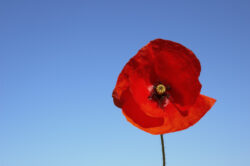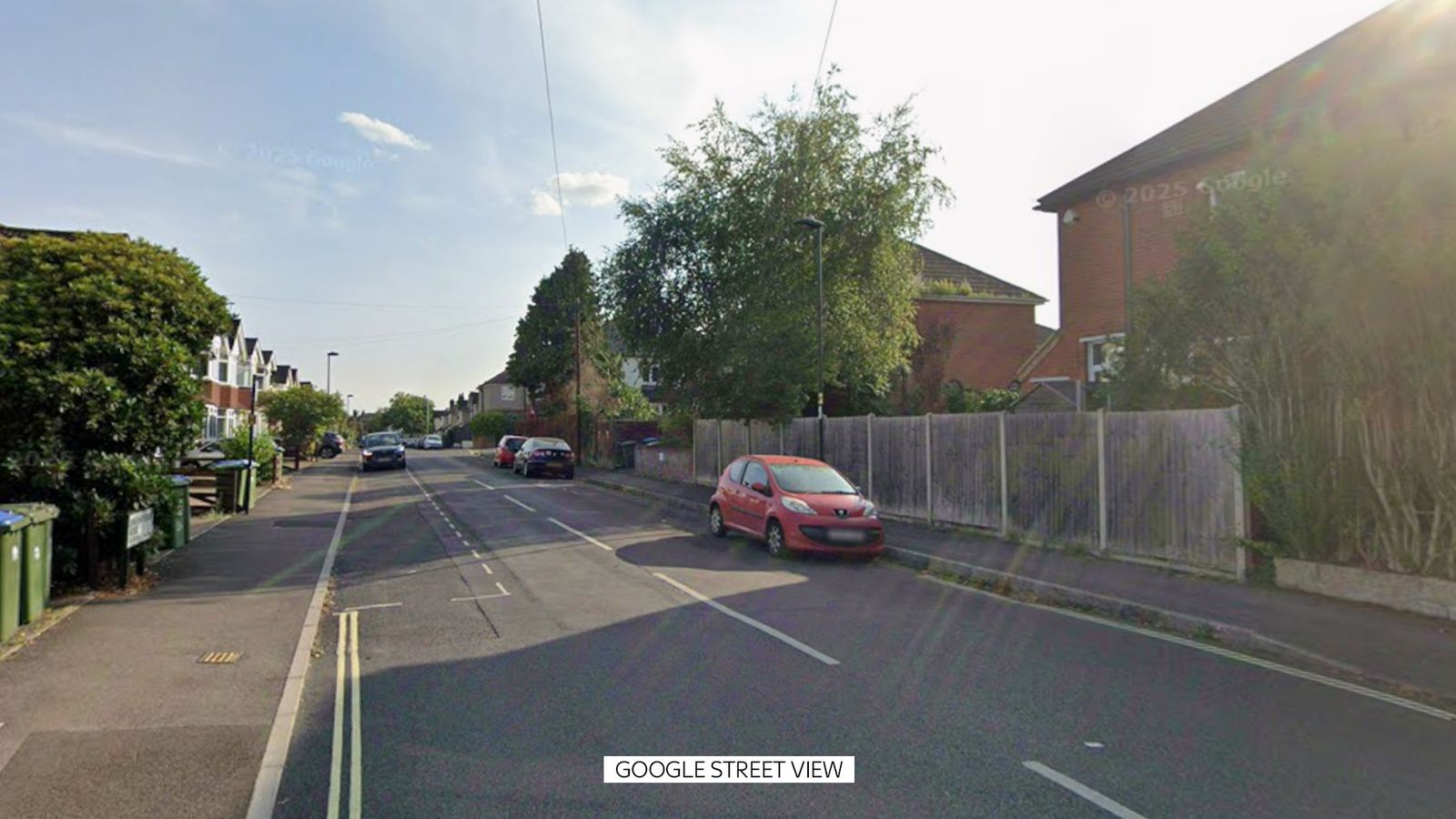There are more than red poppies to choose from, did you know? (Picture: Getty)
Remembrance Day, also known as Armistice Day, happens on November 11 every year.
It marks the day that the First World War ended – specifically on the ’11th hour of the 11th day of the 11th month’.
As well as a two-minute silence which is typically held at 11am, people also wear poppy pins and badges as a mark of respect for servicemen and women, and all those who gave their lives during the war.
Typically in the UK, you’ll see people sporting red poppies as one of the more common symbols – though there are other colours of poppy, symbolising a variety of things.
Here are the colours you can get – and what they all mean.
The red poppy
A classic red poppy (Picture: Getty Images)
A charity called The Royal British Legion has been selling red poppies for more than 100 years now.
Their website explains that the red poppy is ‘a symbol of Remembrance and hope for a peaceful future’.
It adds: ‘Wearing one is a show of support for the service and sacrifice of our Armed Forces, veterans and their families.
‘It represents all those who lost their lives on active service in all conflicts; from the beginning of the First World War right up to the present day.
‘It also honours the contribution of civilian services and the uniformed services which contribute to national peace and security and acknowledges innocent civilians who have lost their lives in conflict and acts of terrorism.’
Donations from the sale of red poppies go directly towards helping the Armed Forces community.
The white/silver poppy
White poppies symbolise peace (Picture: Rex Shutterstock)
White poppies – also known as the silver poppy – were founded in 1933 by members of the Women’s Co-operative Guild who had lost loved ones in the First World War.
These colours were chosen to symbolise that they were against war and violence.
The white poppy was adopted by the Peace Pledge Union as their symbol of peace in 1936.
Symon Hill, Campaigns Manager at the Peace Pledge Union, wrote for Metro.co.uk: ‘White poppies are not a generic peace symbol. Nor are they a protest against remembrance.
‘Quite the opposite: they are a symbol of remembrance for people who have died or suffered in war. That’s why we wear them on Remembrance Day.
‘White poppies also represent a commitment to peace. This follows from remembering the horrors of war. We never say red poppies glorify war – we know many red poppy wearers share many of our values.
‘Instead, we challenge ways in which remembrance is misused to promote a positive image of war or dodgy claims about what war has supposedly achieved.’
You can buy a white poppy from the Peace Pledge Union website.
The purple poppy
Purple poppies are knitted by volunteers (Picture: purplepoppycampaign.org)
The purple poppy is in remembrance of animals that lost their lives at war.
They are sold through the charity Murphy’s Army, and are not associated with The Royal British Legion or the Poppy Appeal.
Instead, sales of purple poppies raise money for charities such as The Horse Trust and Smokey Paws – who provide life-saving pet resuscitation equipment to Emergency Services throughout the UK.
Murphy’s Army helps reunite stolen pets with their owners and founder Andy Smith previously said: ‘As an animal charity we strongly believe that animals lost whilst serving should be remembered.
‘We want to acknowledge the sacrifices that they have made, and continue to make, and ensure they are not forgotten.’
The purple poppies are knitted and can be bought for either people or animals to wear, or you can buy a purple poppy pin badge.
More: Poppy
The black poppy
BlackPoppyRose wants to make the black poppy a global symbol of remembrance (Picture: blackpoppyrose.org)
The Black Poppy Rose has been around for just over a decade, being launched in September 2010 by Selena Carty.
The aim is to commemorate people of all nations of African, Black, West Indian and Pacific Islander heritage who contributed to war efforts.
On their official website, the organisation says the black poppy rose was ‘created to be a symbol that represents the contributions made by the African / Black / Caribbean / Pacific Islands communities to various wars since the 16th century’.
It explains it is ‘a symbol that signifies pride, honour and glory, with the hope that future generations will be inspired by these largely untold historical legacies’.
Black poppy pins, badges and wreaths can be bought through the Black Poppy Rose website, with proceeds going towards the organisation’s mission to preserve, collect and document the stories of men, women and children who fought and sacrificed their lives for the war effort.
The rainbow poppy
A rainbow poppy design was first proposed in 2016.
In 2019, an unofficial rainbow poppy appeared for sale on eBay.
It was inspired by a proposal from LGBT poet laureate Trudy Howson in 2016 for a poppy to commemorate LGBT+ veterans. However, the design was met with controversy.
Ex-Colour sergeant Trevor Coult expressed his anger at what he saw as an attempt to politicise the poppy for different agendas.
He said: ‘The red poppy signifies the blood spilt by servicemen and women across the world who have fought in the different wars, and that’s why we have it. Everyone bleeds red, whether you’re brown, black, white, Asian, gay, bi, it doesn’t matter what you are.’
The eBay seller told Metro.co.uk back in 2019 that ‘no malice was intended and that I can understand those who think that there should only be red poppies, but even the RBL now recognise that there are purple, white and black poppies so why not a rainbow one to commemorate Alan Turing and gay soldiers that have struggled with being accepted.’
You can still buy rainbow poppies from independent retailers, including Etsy.
The blue poppy
VP Harris and Mr Macron’s blue badges were not actually poppies (Picture: AFP)
US Vice President Kamala Harris was seen back in 2021 wearing what looked like a blue poppy on her lapel when commemorating Armistice Day at the Arc de Triomphe in Paris.
However, the blue ‘poppy’, which France’s President Emmanuel Macron also donned, is actually a cornflower.
Instead of the red poppy, the French pay tribute on Remembrance Day by wearing a blue cornflower, known as the Bleuet de France. Just like poppies, cornflowers grew on the land devastated by the First World War. They were the only sign of colour in the mud of the trenches.
The badge – which was originally made of tissue paper – dates back to 1916. It was invented by army nurses Suzanne Lenhardt and Charlotte Malleterre.
Lenhardt and Malleterre wanted to give the injured soldiers an activity to take their mind off of their pain, so got them making flowers, which the soldiers could then sell to the public for a small personal income.
The badges gradually became a symbol of the rehabilitation of soldiers and represents all those who have died for France.
MORE : When is Remembrance Day 2022 and are poppies on sale?
MORE : Where can you buy metal poppy pin badges and are they sanctioned by Royal British Legion?
MORE : Where does the money donated to the Poppy Appeal go?
Follow Metro across our social channels, on Facebook, Twitter and Instagram
Share your views in the comments below
What do the different types of poppy symbolise?





